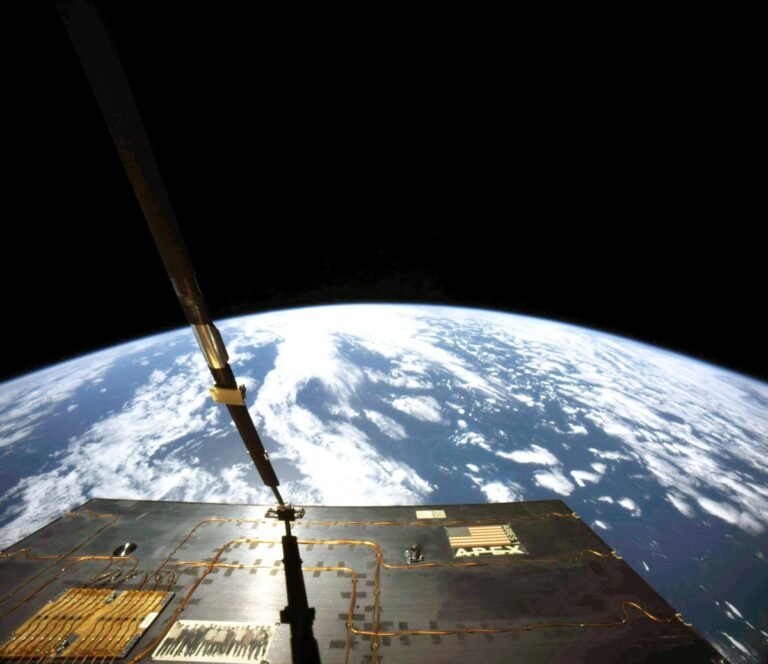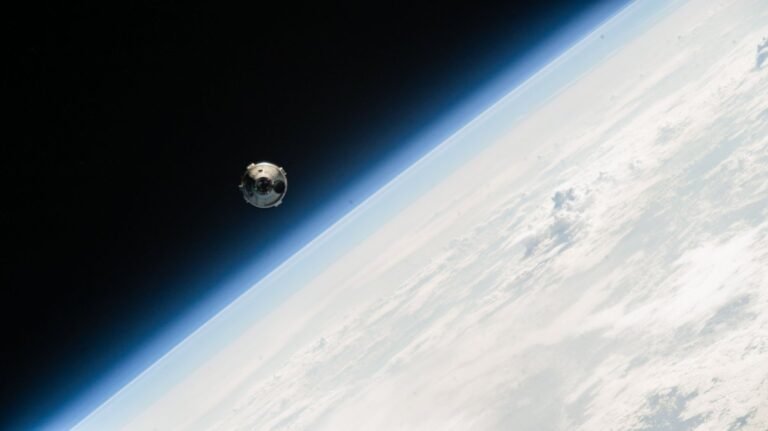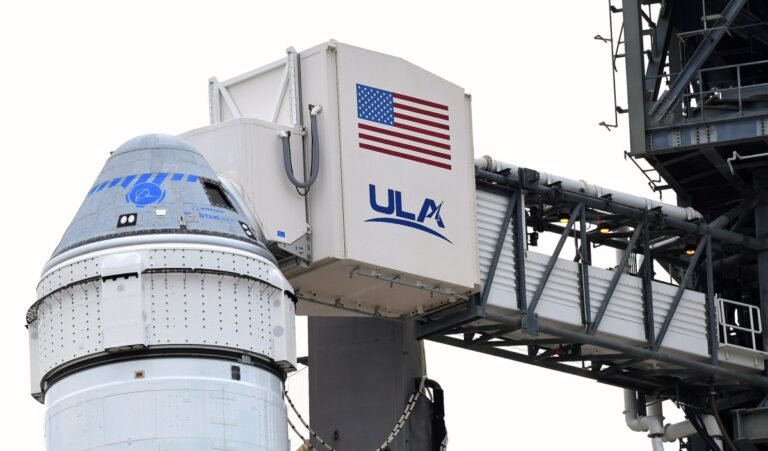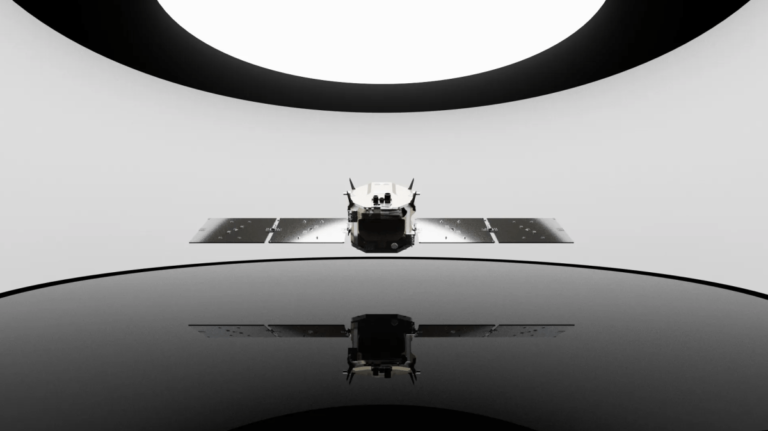
Fresh off the success of its first mission, satellite manufacturer Apex has closed $95 million in new capital to scale its operations.
The Los Angeles-based startup successfully launched and commissioned its first spacecraft, a model called Aries, in March.
The company is on track to manufacture five Aries this year alone, Apex CEO and co-founder Ian Cinnamon told TechCrunch.
Apex was founded on the thesis that the one of the main bottlenecks facing the growth of the space industry was satellite bus manufacturing.
The company is approaching fifty people and that number is likely to double by the end of this year.

Boeing’s Starliner spacecraft has successfully delivered two astronauts to the International Space Station, a key milestone in the aerospace giant’s quest to certify the capsule for regular crewed missions.
After taking some time to equalize pressure between Starliner and the station, the hatch opened at around 12:46 PM.
“Nice to be attached to the big city in the sky,” Wilmore said to Mission Control.
Welcome aboard Starliner crew!!
This mission is the critical final step before Starliner can be certified for regular astronaut transportation missions with NASA.

Boeing’s Starliner spacecraft is officially on its way to the International Space Station, marking a historic first for the long-delayed astronaut transportation program.
If all goes to plan, Boeing will become NASA’s second astronaut transportation provider, joining Elon Musk’s SpaceX.
Boeing did execute a successful uncrewed mission to the ISS in May 2022, but this is the first time the spacecraft has carried humans.
While Boeing has struggled, SpaceX has soared: Using its Crew Dragon capsule, SpaceX has been providing astronaut transportation to and from the ISS since 2020.
This is the last major step before Starliner can be certified as an operational crew system, and the first Starliner mission is expected to launch in 2025.

Rocket Lab and True Anomaly will attempt to deliver and operate space hardware for the military under intentionally tight timeframes, as part of the Space Force’s push to solicit “tactically responsive” space capabilities from commercial companies.
As part of Rocket Lab’s $32 million contract, it will also launch the satellite with its Electron rocket.
True Anomaly will partner with an unnamed “trusted commercial launch provider” for its ride under its own $30 million contract, according to a statement.
Once in orbit, Rocket Lab and True Anomaly must rapidly commission and ready their spacecraft for operations — with each other.
If all goes to plan, Rocket Lab’s Pioneer satellite will conduct the so-called rendezvous and proximity operations with True Anomaly’s Jackal spacecraft.

True Anomaly‘s first mission didn’t go as planned by any stretch of the imagination, but the space and defense startup’s CEO, Even Rogers, said he doesn’t consider it a failure.
The aim of this first mission, Mission X, was to demonstrate these capabilities on orbit for the first time.
True Anomaly closed a $100 million Series B round last year to accelerate those plans.
By all accounts, the outcome of Mission X has not slowed the company down whatsoever: True Anomaly is planning on flying at least twice more in the next twelve months.
“The success story of Jackal Mission X is twofold,” Rogers said.

Varda Space Industries has closed a massive tranche of funding just weeks after its first drug manufacturing capsule returned from orbit.
The pair had an audacious goal to commercialize what until very recently was promising but ultimately small-scale research into the effects of microgravity on pharmaceutical crystals.
Indeed, Varda’s first mission, which returned to Earth in February after 10-months in orbit, does not mark the first time a drug has been crystallized in microgravity.
Astronauts have been conducting protein crystallization experiments in space for decades on the International Space Station and before that, the Space Shuttle.
The startup’s next manufacturing mission will launch later this year, and the team plans to land that spacecraft in Australia.

Few missions more acutely embody the maxim “space is hard” than Atomos Space’s first demonstration mission, which the company has managed to pull back from the brink of disaster — more than once.
That demonstration mission, dubbed Mission-1, launched to orbit on a SpaceX Falcon 9 rocket on March 4.
Deployment was nominal, and Atomos received its first ping from the spacecraft seven minutes after deployment.
After pulling some strings, they were able to get on the phone with the chief systems engineer of satellite communications company Iridium.
Atomos’ spacecraft were moving too fast, and in direct opposition, such that they couldn’t perform the data “handshake” with those Iridium satellites to actually transmit information back down to Earth.

Intuitive Machines’ second moon mission is still on track to launch before the end of this year, after the company only had to make minor adjustments to the lunar lander design, executives said during an earnings call Thursday.
That same lander class, which the company calls Nova-C, will be returning to the moon later this year in that second mission.
The Intuitive Machines team identified just “a handful of adjustments” that will be implemented on the second lander, CEO Steve Altemus said during the earnings call.
Intuitive Machines ended the fourth quarter of 2023 with $30.6 million in revenue and a cash balance of just $4.5 million.
Beyond the second moon mission, 2024 will likely be a pivotal year for the company, which is awaiting the decision on NASA awards that could be extremely lucrative.

Kurs Orbital, a startup founded by Ukrainian space industry veterans, has closed a new tranche of funding to accelerate the commercialization of its satellite servicing technology.
The two-year-old company aims to unlock a new era for human activities in space by enabling capabilities like satellite relocation and inspection, de-orbiting and space debris removal.
Unlike other firms developing in-space servicing tech, Kurs Orbital’s module will be able to attach to “non-cooperative” targets, or target spacecraft that aren’t fitted with any hardware in advance.
On-orbit servicing has gained attention in recent months after the failure of a handful of high-cost, high-profile satellite missions.
We believe that one of the next big steps in space will be multimodality, as we know it on Earth.

Apex Space just moved one step closer to its goal of upending satellite bus manufacturing, with the startup announcing on Tuesday that its first vehicle is healthy on orbit.
The company launched its first satellite, the first of a class Apex is calling “Aries,” on SpaceX’s Transporter-10 rideshare mission on Monday.
“That will be incredibly valuable over the next many years while the satellite stays in orbit,” Cinnamon said.
Apex, whose backers include Andreessen Horowitz and Shield Capital, is building productized satellite buses to solve the satellite bus “bottleneck” facing the space industry.
In addition to Aries, an ESPA-class spacecraft bus that can support payloads up to 100 kilograms, the company is also developing two larger bus product lines, Nova and Comet.













